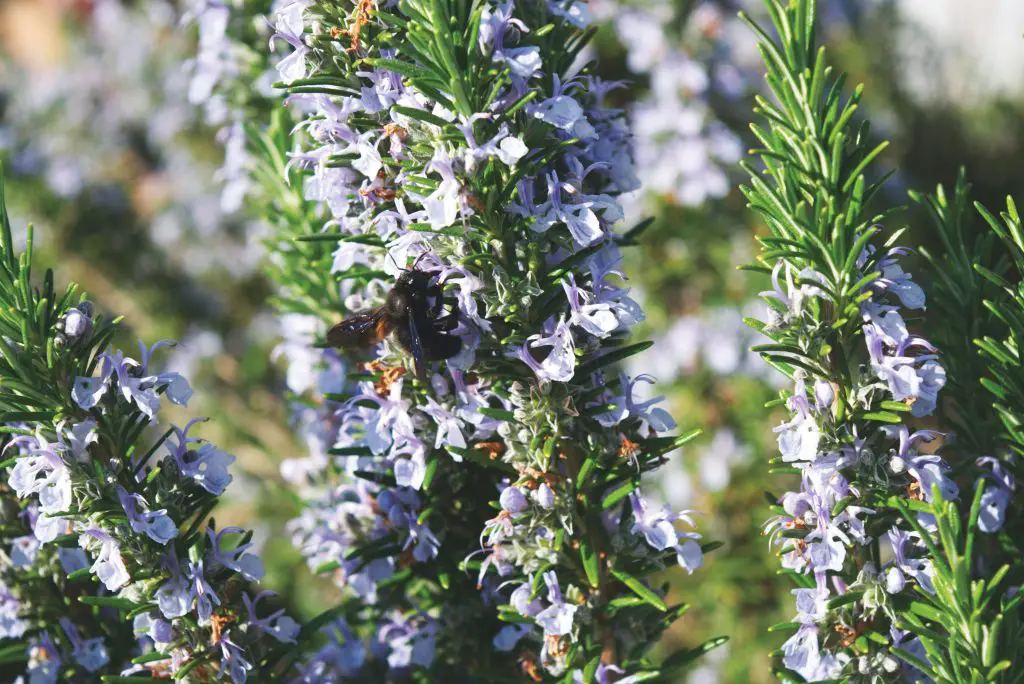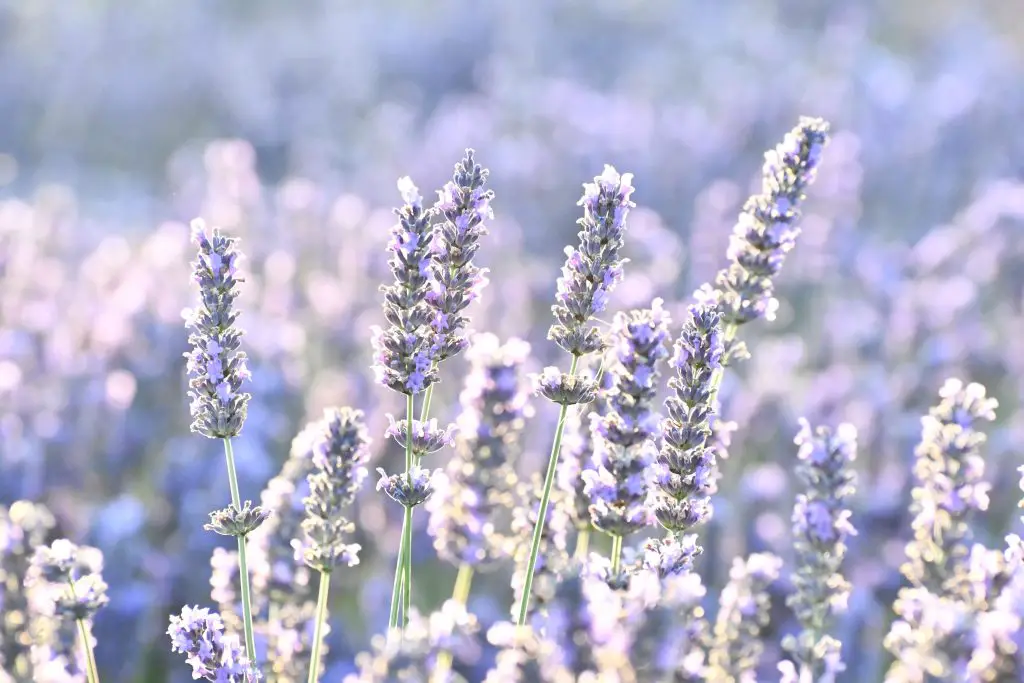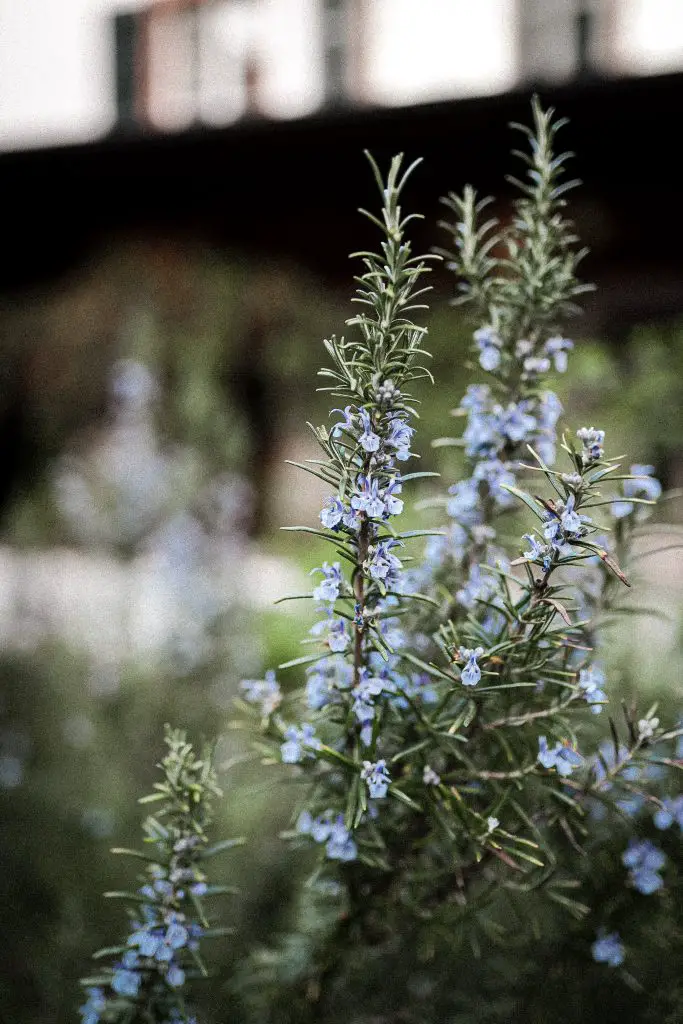What Is The Difference Between Lavender And Rosemary? Lavender and Rosemary are among some of the most popular plants to grow in the garden. Both plants are highly fragrant, attract large numbers of pollinators, and are useful in ornamental and edible gardens. So what is the difference between the plants? And how do you tell the difference?
The most distinctive physical difference between Lavender and Rosemary is the location of the flowers. Lavender flowers appear on the end of the stems whereas Rosemary produces flowers along the length of the stem. The other distinctive feature is the colour of the foliage, most lavenders feature grey to grey-green leaves whereas Rosemary has a narrow bright green leaf.

The other distinctive difference is the aroma of the two plants. Lavender is frequently used in cosmetics and is sometimes described as “floral and sweet“ whereas Rosemary is described as having a strong camphor smell. However, to confidently distinguish between the two plants by smell would require prior experience with them.
The other feature is that most Rosemary plants have a distinctly blue flower whereas Lavender flowers tend to be purple in colour. However, there are some cultivars in both species that differ in colour, Lavender has some varieties with white flowers whereas Rosemary has some pink and white flower varieties.
Are Lavender And Rosemary From The Same Plant Family?
Both Lavender and Rosemary belong to Lamiaceae, which is a subset of the Aster (daisies). They are classified in this group because of the square stems with simple leaves. A simple leaf occurs when there is only one leaf attached directly to the main stem of the plant as opposed to a cluster of leaves. The leaves sit opposite each other on the stem of the plant which is another defining feature of the Lamiaceae family.
Can Rosemary And Lavender Grown In Similar Conditions?
Rosemary and Lavender can be grown in similar conditions. Both herbs were thought to have originated in the Mediterranean and middle eastern regions. As a result of this, both plants are considered drought-tolerant and will thrive in hot conditions.
Neither plant does well in wet heavy soils however, Lavender is more resistant to cold temperatures and is able to survive down to zone 5. Rosemary can only survive in zone 7 or above.

How To Propagate Rosemary And Lavender
Both Lavender and Rosemary can be grown from seed, however, the germination for Rosemary, in particular, can be unreliable and slow. As such we recommend growing the plants from cuttings. For both plants, this can be done in water or soil.
Irrespective of the medium you chose to grow the plants in, the preparation of the cuttings is much the same. Start by taking a hardwood cutting that is approximately four to six inches long, however, when doing this stems with flowers should be avoided. The base of the cutting should be cut on a 45-degree angle to maximize the surface area at the base of the cutting as this will help the plant absorb nutrients and water.
Once this is done strip all the lower leaves off the cutting leaving only the top couple of leaves of the plant. Place the plant into the water or soil. If you are using water place a few inches in the base of the jar and leave it on a warm window ceil. It will take several weeks for white spindly roots to appear, during this period it will be necessary to replace the water periodically, every week or so.
Allow the roots to reach a reasonable size before transplanting them out into the soil. At this stage, it is best to transplant the rooted cuttings into pots and keep the pot in a warm sunny spot. This will allow the plant to further develop its root system before being placed in the garden.
In the case of planting into the soil, it is best to use seed raising mix rather than a potting mix or garden soil initially. The reason is that seed raising mix has a fine texture, holds moisture well and also is free of any weed seed or soil pathogens. When placing the cuttings into the soil it is advisable to use a rooting hormone as it will increase the chances of the cutting striking.
Academic research has shown that liquid rooting hormones are generally more effective than powdered ones. To read more about the extent of the improvement click here.
When placing the cuttings in the soil it is advisable to place the cuttings around the edge of the pot rather than in the centre. The reason for that is the sides of the pots are generally slightly warmer which will encourage the fast formation of the roots.
When you observe growth the cuttings need to be planted into their own individual pots and allowed to grow for at least a few weeks before planting them into the garden.

Growing Lavender And Rosemary In The Garden
Both Lavender and Rosemary prefer a sunny location and also require free-draining soil. If you live in a location that has heavy clay-based soil it is advisable to add additional drainage. There are a couple of different ways to do this, the first is to add horticultural grit to the soil, however, if the soil is really heavy it may also be beneficial to add compost as well.
The second option is to use a planting mound where the soil is heaped into a pile to help elevate the plant thereby improving the drainage. However, planting into a sloping location often also improves the drainage as well.
The best time to put new plants into the garden is in early spring after the risk of frost has passed. The reason for this is that it gives the plant time to establish its root system before the heat of summer arrives.
While Lavender and Rosemary are extremely resistant to hot dry conditions they are most susceptible to heat and water stress in the first season when their root system is yet to fully establish. As such it is important to water them relatively regular in the first season. The addition of a thick layer of mulch will aid in retaining moisture.
Ongoing Care And Maintenace Of Rosemary and Lavender
Once the Rosemary and Lavender have become established the plants are generally pretty tough and will tolerate an extended period of neglect. However, if the plants are left to their own devices indefinitely they can, over time, become woody and foliage can become sparse and misshapen.
If the plants reach that point it can become difficult to revive them and get them back into shape. The reason for this is that both Lavender and Rosemary generally will not respond to a prune if the cuts are made below where foliage appears on the stem.
I know, from first-hand experience that if you cut the Lavender and Rosemary too hard the branch or in some cases the whole plant will die. To read more about this click here.
To avoid this situation it is best to prune the plants light regularly. Each prune will encourage the plant to produce side shoots that will help maintain consistent foliage cover and a desirable shape for years to come.
